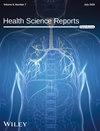Prevalence and Risk Factors Associated With Cesarean Section in Syria: A Cross-Sectional Study of the Two Largest Health Centers
Abstract
Background and Aims
A cesarean section (CS) is a surgical procedure used during pregnancy and childbirth to ensure maternal and fetal well-being. Global CS rates are increasing, with different studies demonstrating this trend. The purpose of this study, is to look into the prevalence of CS and its contributing factors in Syrian hospitals.
Methods
A retrospective cross-sectional study was conducted at Aleppo University Hospital and Damascus University Hospital in Syria. The data were collected from patients' medical records during the period between January and December 2021. The study population included women who gave birth at these hospitals in 2021. The study used a questionnaire with four domains: sociodemographic features, mother's history, birth history, newborn information, and delivery type with indications and complications. CS indications were evaluated using protocols from the Association of Scientific Medical Societies in Germany (AWMF). Statistical analysis was conducted using SPSS Statistics 25.0.
Results
Among the deliveries, 47.4% were C-sections, with slightly higher rate at Damascus. Population characteristics revealed differences in age, residency, smoking history, birth details, and associated medical conditions. The majority of participants were aged above 25 years old, rural residents, and nonsmokers. The primary CS cases were mainly medically indicated. Most C-sections were repeat procedures (68%), with fetal distress being the most common indication. Aleppo had higher repeat C-section rates (71.5% vs. 65.5% in Damascus). Most primary C-sections were medically indicated (85.2%), while 14.8% were non-indicated, often due to maternal requests or previous complicated births.
Conclusion
This study sheds light on CS prevalence, indications, and influencing factors in Syria, contributing to the broader discourse on optimizing CS rates and improving maternal and neonatal outcomes. Further research is necessary to explore additional factors and interventions to curb unnecessary CS procedures.


 求助内容:
求助内容: 应助结果提醒方式:
应助结果提醒方式:


